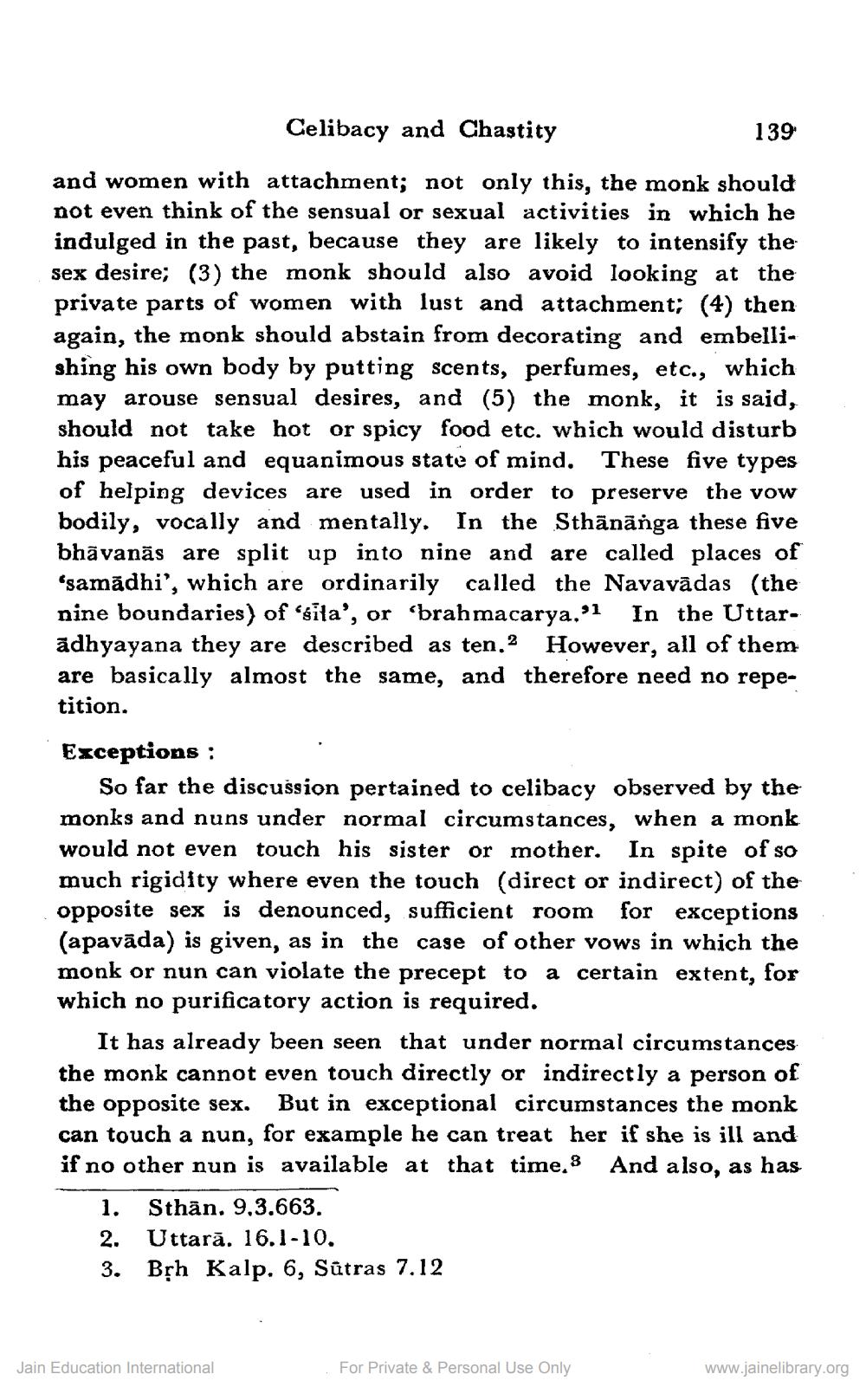________________
Celibacy and Chastity
and women with attachment; not only this, the monk should not even think of the sensual or sexual activities in which he indulged in the past, because they are likely to intensify the sex desire; (3) the monk should also avoid looking at the private parts of women with lust and attachment; (4) then again, the monk should abstain from decorating and embellishing his own body by putting scents, perfumes, etc., which may arouse sensual desires, and (5) the monk, it is said, should not take hot or spicy food etc. which would disturb his peaceful and equanimous state of mind. These five types of helping devices are used in order to preserve the vow bodily, vocally and mentally. In the Sthānanga these five bhāvanās are split up into nine and are called places of 'samadhi', which are ordinarily called the Navavadas (the nine boundaries) of 'sita', or 'brahmacarya."1 In the Uttaradhyayana they are described as ten.2 However, all of them are basically almost the same, and therefore need no repetition.
Exceptions:
So far the discussion pertained to celibacy observed by the monks and nuns under normal circumstances, when a monk would not even touch his sister or mother. In spite of so much rigidity where even the touch (direct or indirect) of the opposite sex is denounced, sufficient room for exceptions (apavāda) is given, as in the case of other vows in which the monk or nun can violate the precept to a certain extent, for which no purificatory action is required.
It has already been seen that under normal circumstances the monk cannot even touch directly or indirectly a person of the opposite sex. But in exceptional circumstances the monk can touch a nun, for example he can treat her if she is ill and if no other nun is available at that time. And also, as has
1.
Sthan. 9.3.663.
2.
Uttara. 16.1-10.
3. Brh Kalp. 6, Sutras 7.12
139
Jain Education International
For Private & Personal Use Only
www.jainelibrary.org




